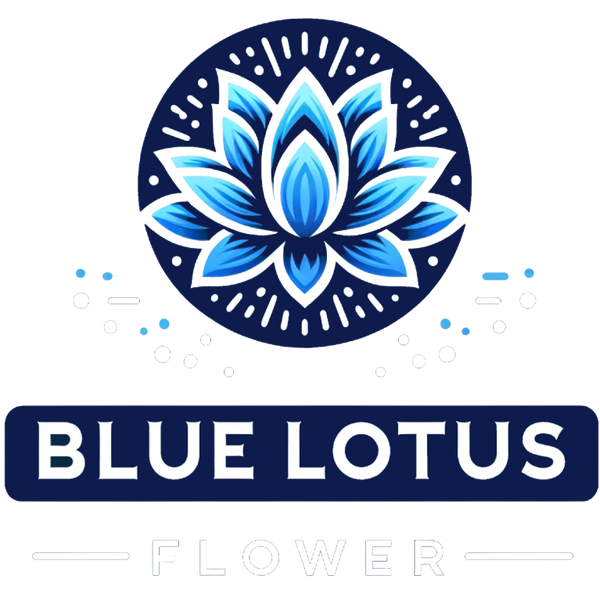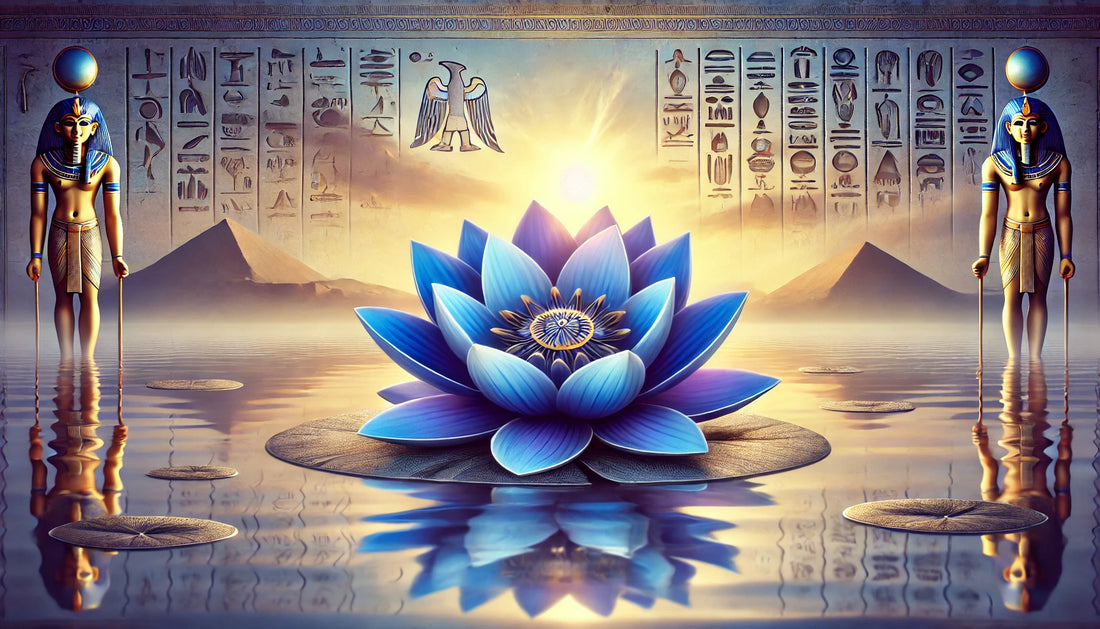The blue lotus, known scientifically as Nymphaea caerulea, is one of the most captivating symbols in ancient Egyptian culture. Revered for its beauty and mystical properties, this sacred flower has been associated with various aspects of Egyptian mythology, spirituality, and art. Its presence in tombs, temples, and ancient texts provides a window into the rich tapestry of beliefs held by the ancient Egyptians. In this article, we will explore the significance of the blue lotus in ancient Egypt, its unique characteristics, psychoactive properties, representation in art and literature, and its enduring legacy in contemporary society.
What is the Significance of the Blue Lotus in Ancient Egypt?
Historical Context of the Lotus Flower in Ancient Egyptian Culture
The historical significance of the blue lotus in ancient Egypt is profound, as it was often seen as a symbol of creation and rebirth. Ancient Egyptians believed that the lotus flower would bloom at dawn and close at dusk, creating a natural metaphor for the cycle of life and death. This behavior linked the blue lotus to the daily resurrection of the sun, a theme prevalent in Egyptian mythology, particularly associated with the Egyptian lotus. The blue lotus was frequently depicted in Egyptian art, often found in tomb paintings and sculptures, symbolizing the hope for rebirth in the afterlife. As such, the ancient Egyptians held the blue lotus flower in high esteem, often associating it with divine qualities and spiritual awakening.
Symbolism of the Blue Lotus in Egyptian Mythology
In Egyptian mythology, the blue lotus flower symbolizes purity, beauty, and tranquility. It is often associated with various deities, including the sun god Ra, who was believed to emerge from a blue lotus at the beginning of creation. This powerful imagery suggests that the blue lotus was not only a flower but a representation of divine presence and cosmic order. Furthermore, the flower's ability to rise from muddy waters and bloom into a stunning creation signifies resilience and enlightenment, making it a powerful symbol in the spiritual practices of the ancient Egyptians.
Connection to the Sun God Ra and Rebirth
The blue lotus's connection to the sun god Ra is a central theme in ancient Egyptian beliefs. The flower was often depicted in religious rituals and art as representing the sun's life-giving energy. This connection further emphasizes the significance of the blue lotus as a symbol of rebirth, as Ra's daily journey across the sky mirrors the flower's own cycle of blooming, much like the unopened lotus bud. The ancient Egyptians believed that the blue lotus could facilitate a spiritual journey, allowing the soul to transcend the physical realm and achieve enlightenment. Thus, the blue lotus played an essential role in the spiritual landscape of ancient Egypt, embodying the ideals of renewal and divine connection.
How Does the Blue Lotus Flower Differ from Other Lotus Varieties?
Characteristics of the Sacred Blue Lotus (Nymphaea caerulea)
The sacred blue lotus, or Nymphaea caerulea, is distinct from other lotus varieties, such as the white lotus (Nelumbo nucifera) and the pink lotus. The blue lotus is characterized by its striking blue petals, which can have hints of purple and yellow at their center, making it distinct from the unopened lotus buds of other species. This unique coloration stands out in the lush landscapes of ancient Egypt, making it an object of fascination and reverence. Additionally, the blue lotus grows in shallow waters, allowing its beautiful flowers to float gracefully on the surface. The flower's aromatic properties and psychoactive compounds further enhance its allure, contributing to its revered status among the ancient Egyptians.
Comparison of Blue Lotus with Other Lotus Flowers
While the blue lotus shares some similarities with other lotus species, such as the white and pink lotus, its cultural significance and unique attributes set it apart. For instance, the white lotus is often associated with purity and the divine, frequently appearing in Hindu mythology, while the pink lotus symbolizes love and compassion, contrasting with the Egyptian blue lotus. In contrast, the blue lotus is predominantly linked to the themes of rebirth and enlightenment in Egyptian mythology. The blue lotus flower's psychoactive properties, attributed to a compound called nuciferine, further differentiate it from its counterparts, as it was believed to induce a state of euphoria and relaxation, enhancing spiritual experiences during rituals.
Unique Properties of the Blue Lotus in Egyptian Practices
The unique properties of the blue lotus flower were extensively utilized in ancient Egyptian practices, especially in religious and healing rituals. The psychoactive effects of the blue lotus were believed to promote relaxation and a sense of peace, making it an essential component in ceremonies aimed at connecting with the divine. Ancient Egyptians would often infuse the flower in wines or create ointments for topical application, enhancing its ceremonial significance. Additionally, the flower's aromatic qualities were used in rituals to cleanse spaces and elevate the spiritual atmosphere, further cementing the blue lotus's role as a sacred flower in Egyptian culture.
What Are the Psychoactive Properties of the Blue Lotus?
Understanding Nuciferine and its Effects
Nuciferine, the primary psychoactive compound found in the blue lotus, is responsible for the flower's calming and euphoric effects. This alkaloid interacts with the brain's receptors, producing feelings of relaxation and tranquility. Ancient Egyptians recognized these effects and incorporated the blue lotus into their spiritual practices to enhance their connection to the divine. The psychoactive properties of the blue lotus were believed to facilitate a deeper understanding of one’s self and the universe, promoting a sense of enlightenment and spiritual awakening. This unique aspect of the blue lotus highlights its importance not only as a symbol of beauty but also as a tool for personal and spiritual growth, often associated with the sun in various spiritual practices.
How the Blue Lotus Was Used in Ancient Egyptian Rituals
The use of the blue lotus was an integral part of ancient Egyptian rituals, often employed to elevate the spiritual experience during ceremonies. Priests and priestesses would use the flowers in various forms, such as infusions or incense, to create an atmosphere conducive to meditation and divine communion. The psychoactive effects of the blue lotus allowed participants to transcend ordinary consciousness, facilitating a connection with the gods and the afterlife. Additionally, the blue lotus was often included in funerary practices, symbolizing the deceased's journey toward rebirth and the afterlife, reinforcing its significance in the context of Egyptian spirituality.
Modern Uses and Perceptions of Psychoactive Effects
In contemporary society, the blue lotus has experienced a resurgence in interest, particularly among those exploring natural psychoactive substances for relaxation and spiritual exploration. Herbalists and practitioners of alternative medicine have begun to incorporate blue lotus into various products, including teas, tinctures, and essential oils. The modern perception of the blue lotus often emphasizes its ability to promote relaxation, reduce anxiety, and enhance meditation practices, particularly through the use of the blue lotus. This renewed interest in the blue lotus reflects a broader trend toward natural remedies and spiritual practices that seek to harness the flower's ancient wisdom and therapeutic potential, especially in altered states of consciousness.
How is the Blue Lotus Represented in Egyptian Art and Literature?
Depictions of the Blue Lotus in Ancient Egyptian Tombs
The blue lotus is frequently depicted in ancient Egyptian tombs, such as the tomb of Nebamun, symbolizing the journey of the soul toward the afterlife. Tomb paintings often portray the deceased holding a blue lotus, which signifies their hope for rebirth and eternal life. The presence of the blue lotus in these artistic representations serves as a reminder of the cycle of life and the spiritual journey that awaits beyond death, akin to holding a lotus in meditation. These depictions not only highlight the importance of the blue lotus in funerary practices but also reflect the aesthetic appreciation of this remarkable flower in ancient Egyptian art.
The Role of the Blue Lotus in the Book of the Dead
In the "Book of the Dead," an ancient Egyptian funerary text, the blue lotus plays a significant role in the narrative surrounding the afterlife. The text often references the blue lotus as a symbol of rebirth and transformation, emphasizing its importance in guiding the deceased through the trials of the afterlife. The blue lotus's association with the sun god Ra further reinforces its significance as a means of attaining enlightenment and spiritual ascension. This connection illustrates the depth of the blue lotus's symbolism within ancient Egyptian literature, highlighting its role as a bridge between the earthly realm and the divine.
Influence of Blue Lotus in Greek Mythology
The influence of the blue lotus extended beyond ancient Egyptian culture, permeating into Greek mythology as well. The Greeks identified the blue lotus, also known as the Egyptian blue lotus, with various themes of beauty and transformation, often associating it with the goddess of love and beauty, Aphrodite. The flower's enchanting appearance and mystical qualities captured the imagination of Greek poets and artists, who frequently referenced the blue lotus in their works. This cross-cultural appreciation for the blue lotus underscores its enduring legacy as a symbol of beauty, spirituality, and transformation, bridging the gap between ancient Egyptian and Greek beliefs.
What Can We Learn from the History of the Blue Lotus in Egyptian Culture?
Evolution of the Blue Lotus Symbolism Through the Ages
The symbolism of the blue lotus has evolved significantly throughout history, reflecting broader changes in cultural and spiritual beliefs. Initially revered as a sacred flower in ancient Egypt, the blue lotus's importance has transcended time and geography. Today, it symbolizes the ancient Egyptian ideals of rebirth and enlightenment and the modern pursuit of spiritual awakening and personal growth. This evolution highlights the adaptability of the blue lotus as a symbol, demonstrating its relevance across different cultures and epochs, including ancient Greece.
The Blue Lotus as a Symbol of Enlightenment and Spirituality
The blue lotus continues to symbolize enlightenment and spirituality in contemporary society. As individuals seek deeper connections to themselves and the universe, the blue lotus reminds them of the potential for personal transformation and growth. Many spiritual practitioners incorporate the blue lotus into their rituals and meditative practices, utilizing its symbolism to inspire a journey toward self-discovery and enlightenment, often in conjunction with the Egyptian lotus. This ongoing relevance of the blue lotus underscores its significance as a timeless symbol of the human quest for meaning and understanding.
Legacy of the Blue Lotus in Contemporary Society
The legacy of the blue lotus in contemporary society is evident in various forms, from art and literature to wellness practices. The flower's representation in modern art often captures its ethereal beauty and mystical qualities, while literature continues to explore its symbolism of transformation and rebirth, often linked to altered states of consciousness. Additionally, the blue lotus has found a place in herbalism and natural medicine, with many seeking its calming and psychoactive effects. This multifaceted legacy demonstrates the enduring power of the blue lotus, a flower that has transcended time and culture to remain a symbol of mystique, magic, and spiritual exploration.

